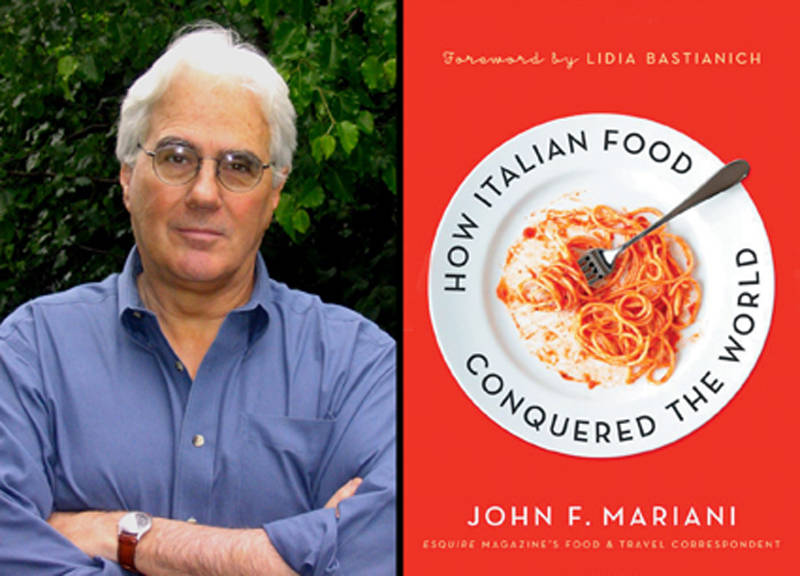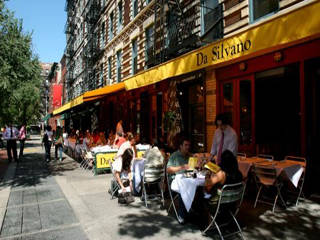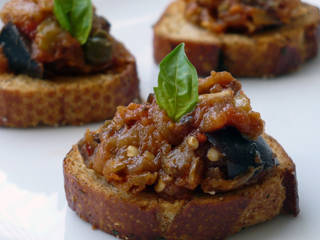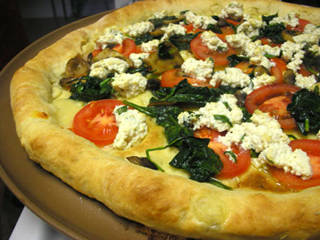How Italian Food Conquered the World
“Go to a restaurant anywhere in the world today - even in Tokyo, Hong Kong, or Mumbai- and chances are you will see Italian dishes listed on the menu. There will inevitably be a pasta dish or two, perhaps cannelloni stuffed with foie gras and black truffles at a three-star Michelin restaurant in Paris. There might be a selection of Italian salumi and burrata cheese offered at a gastro-pub in London. Pizzas seem to have becomes requisite to a menu in New York as sirloin steak. Salads everywhere are now being dressed with extra virgin olive oil and a dash of balsamic vinegar. For dessert there will be house made gelato and panna cotta. And the wine list will always carry Italian labels, probably even a few Super Tuscans…Until recently such interest in and ubiquity of Italian food and wine was unthinkable, and it would have been highly unusual to find Italian dishes on menus at non-Italian restaurants.” This is just a sample of what a reader will find in John Mariani's book, How Italian Food Conquered the World, published by Palgrave Macmillan.
Mariani, Esquire's food and travel columnist, continues, “While it is now indisputable that Italian food is among the most popular in the world, it is not very long ago that Italian food just about everywhere outside Italy was regarded as little more than macaroni with red sauce, chicken parmigiana, pizza, and 'dago red' wines.”
There is no doubt that Italian food is one of the most beloved cuisines in the America. It reigns so supreme in everything from our restaurants and cookbooks to our Sunday dinner tables that it is difficult to imagine a world in which Italian cooking was brushed aside as nothing more than mounds of garlic and red sauce. The rise of our Italian-American food culture and the emigrants who made it possible was a journey fueled by endurance, passion and triumph that will inspire a whole new appreciation for the foods we are so enamored by today. John Mariani chronicles this remarkable story , a story that starts with the Greek, Roman, and Middle Eastern culinary traditions and follows the wave of hopeful Italian immigrants who arrived in America clinging to their familiar food and determined to use it as means to a better life. Their eventual rise from pizzeria and sandwich shop owners to true restaurateurs is carefully narrated, featuring the trials and triumphs of restaurants like Da Silvano, Spiaggia, Bottega and Il Cantinori.
The story of Da Silvano, for example, is particularly inspiring, as it narrates the rise to fame of a guy who could have been any of us. Back in 1975 in Greenwich Village, “Silvano Marchetto began with just four tables and a short menu that strayed from the red-sauce model of restaurants all around him. Several dishes, though not all, were Tuscan, such as crostini of chicken livers and trippa alla fiorentina, and it was novel enough at the time to compete with the highly popular Trattoria Alfredo a few blocks West, where Alfredo Viazzi also served out-of-the-ordinary Italian food such as cotechino sausage with salsa verde and the Livornese seafood soup called caciucco. Marchetto, who always insisted that his cuisine, while based on Tuscan tradition, was entirely his own idea and a lighter style than his competitors', was in the right place at the right time.” The author continues to explain that the art scene developed in the area and stars like Michael Cimino, Martin Scorsese, John Cassavetes, Robert De Niro, Andy Warhol and Jean-Michel Basquiat became regulars. The most important patron though was Anna Wintour, editor of Vogue, who made the restaurant famous. “As the most powerful woman in the fashion industry, Wintour had shifted the magazine's focus to younger designers, models, and photographers, which coincided perfectly with the edginess which coincided perfectly with the edginess of the arts scene downtown, where she would hold photo shoots. Da Silvano was a place everyone wanted to be and be seen, including Madonna, who dined often at Da Silvano, and when she did, the diva wore Prada.”
In her foreword to the book, celebrity chef Lidia Bastianich writes that “John Mariani's tale of Italian food and its culture is a revealing and informative one. Beneath its cover, within the pages, lies a story of a people who, century after century, have sought to share a love of their food and culture and marry the two so effortlessly that the end result has not only captivated but 'conquered' the world.”
In response to the book, Mauro Trabalza chef at Sora Lella has said “Italian food is still conquering the world. This promotion of Italian food originates here in Italy where producers, journalists and chef publicly support local cuisines and unknown dishes and this stimulates the curiosity of foreign countries. Our cuisine is simple and unique. Traditional recipes are passed from generation to generation and this is appreciated abroad. We have history and where there is history there is authenticity. This is what's really important, presenting dishes made with the best ingredients, with no compromise.”
Paola Beretti wine consultant for Wine Estates of Europe also had her say “Italian food conquered the world because it is not pretentious. Our dishes are simple but they can be sophisticated. We use genuine, flavorful and healthy ingredients that have no equal. My grandmother used to make a simple place of pasta with fresh tomato sauce, extra virgin olive oil and fresh garlic and basil... it was pure bliss. You can get creative with more complicated dishes while maintaining simplicity of flavor. People always like to discover something new, something that mirrors the place it comes from. And although Italy is a small country it gives you exactly this.”
Indeed Italian food is so dominant that even New York's French Culinary Institute acknowledged its importance by establishing the Italian Culinary Academy, designed by Tuscan chef Cesare Casella, and, using Mariani's words, “No dish soared as high into the culinary stratosphere in the past decade as pizza did. Once dismissed as an old-fashioned cheap, oily, garlicky Italian-American snack food sold out of storefronts, pizza rose to faddish eminence in the 1980s,” and there is no restaurant now that does not serve it or at least some type of flat bread/focaccia.
Through history, capture in the pages of Mariani's book, we have witnessed the rise in status of Italian food from low-class to the most recognizable, stylish, and influential cuisine in the world.








































i-Italy
Facebook
Google+
This work may not be reproduced, in whole or in part, without prior written permission.
Questo lavoro non può essere riprodotto, in tutto o in parte, senza permesso scritto.